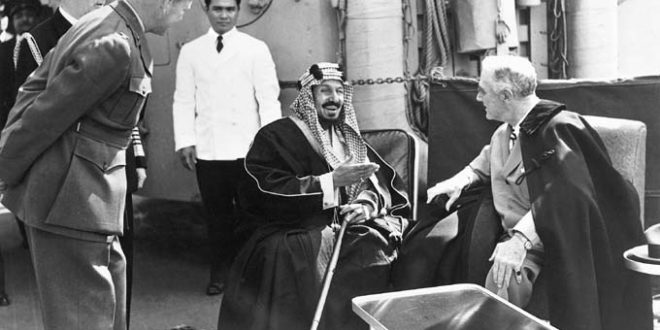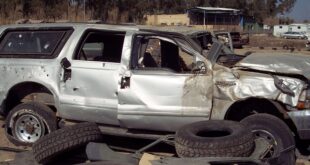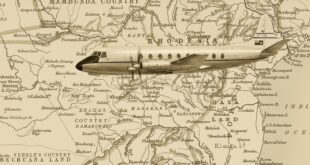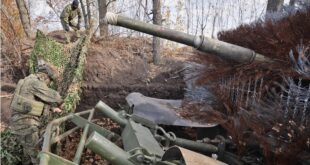Roosevelt meets with King Abdul Aziz,
The Dhahran Airfield and Civil Air Terminal
By Nate Herring
On February 14, 1945, U.S. President Franklin D. Roosevelt met with King Abdul Aziz of Saudi Arabia aboard the USS Quincy in the Great Bitter Lake on the Suez Canal. This meeting would have lasting implications on U.S. – Saudi relations for years to come.
Though the two nations established diplomatic relations in 1939, no American official higher than a minister in the diplomatic service had ever met the king. It wasn’t until 1942 that the State Department posted its first resident envoy in Jeddah, a career officer named James Moose, the second diplomat assigned to the nation and the first to live there. In 1943, Roosevelt recognized that Saudi Arabia was important to war efforts during World War II due to its oil production and declared the country eligible for financial aid. Later that year, the U.S. diplomatic mission in Jeddah was upgraded to legation and Moose was replaced with a higher ranking official, Marine Col. William Eddy. Eddy developed a close relationship with King Abdul Aziz and it was his efforts that made the meeting with Roosevelt possible.
The two leaders were very different. Roosevelt was knowledgeable, well-travelled, and president of one of the world’s most advanced nations. By contrast, the 64-year old Saudi King was semi-literate, had travelled no further than Basra, Iraq, and was king of one of the world’s most impoverished nations.
Though they had more differences than similarities, Roosevelt and Abdul Aziz immediately developed a strong rapport.
The king told the president that his legs were getting weaker each year and that the president was lucky to have a wheelchair to get around. This caused Roosevelt to give Abdul Aziz one of the two wheelchairs he had with him on the trip. The king was grateful and called it his “most precious possession” and said it was “a gift from my great and good friend,” Eddy recounted in a brief narrative, “F.D.R. meets ibn Saud,” published in 1954.
In addition to the impromptu gift of the wheelchair, Roosevelt gave the king a DC-3 passenger airplane. The plane even included a rotating throne so the king could always face Mecca when flying. This gift would have major effects on the country’s future in aviation and would become the first plane in the fleet of what is now the Saudi Arabian Airlines.
During his trip, the king was treated by the Americans to great food including apple pie a la mode, a dish he especially grew to love. He enjoyed the food so much that he requested the cook be given to him as a gift from the President. Roosevelt explained that the sailor had a commitment to the Navy and giving him as a gift wouldn’t be possible. As an alternative, he offered to have the cook train some of the king’s staff, according to Tom Lippman, author and former diplomatic correspondent and Middle East bureau chief for the Washington Post.
Roosevelt and Abdul Aziz spent several hours speaking in private about the relationship between the two countries. Roosevelt, who was known for being charming and well-liked, made a great impression on the king.
Roosevelt was not the only world leader that Abdul Aziz met at that time. Having learned about the meeting with Roosevelt, British Prime Minister Winston Churchill wanted to meet with the king. He viewed Saudi Arabia as part of Britain’s sphere of influence in the Middle East and didn’t want to be upstaged by the United States. A meeting was set up with Churchill, but the meeting was not as productive as the meeting with the president.
During the visit with the king, Roosevelt refrained from smoking and drinking in front of the king, however, Churchill did not.
“If it was the religion of His Majesty to deprive himself of smoking and alcohol I must point out that my rule of life prescribed as an absolutely sacred rite smoking cigars and also drinking alcohol before, after, and if need be during all meals and in the intervals between them,” Churchill wrote in his memoirs.
In addition, Churchill’s gift of a Rolls Royce further offended the king because the driver’s side was on the right and required the king to sit on the left, which was considered a “position of dishonor.” He never once used the car, according to Lippman.
Overall the king’s impression of Churchill was not favorable. He compared the two during a private meeting with Eddy.
“’The contrast between the president and Mr. Churchill is very great,’ the king said,” wrote Eddy. “’Mr. Churchill speaks deviously, evades understanding, changes the subject to avoid commitment, forcing me repeatedly to bring him back to the point. The president seeks understanding in conversations; his effort is to make the two minds meet, to dispel darkness and shed light upon the issue.’ The king concluded: ‘I have never met the equal of the president in character, wisdom and gentility.‘”
Even after Roosevelt’s death shortly after the meeting, the strong impression left on the king allowed President Truman to continue the relationship with Saudi Arabia. One of the results of the meeting was the king’s approval of the U.S. military to build the Dhahran Airfield.
The 1945 meeting between President Franklin D. Roosevelt and King Abdul Aziz of Saudi Arabia fortified relations between the two nations; however, U.S. interests in Saudi Arabia actually began a few years prior.
As World War II raged on, the U.S. War Department, now the Department of Defense, recognized Saudi Arabia as a prime location and wanted to build an airbase there because of its proximity to the Pacific Theater. According to Rachel Bronson, author of Thicker than Oil: America’s Uneasy Partnership with Saudi Arabia, Saudi Arabia was seen as an important staging ground for resupplying the Russians, who were then allies, and the country was also located along a logistical route used to resupply troops fighting Japan. It provided an important stopover between Cairo, Egypt, and Karachi, Pakistan.
The War Department made a formal request for an airfield near Dhahran in 1944; however, the State Department anticipated their interest in Saudi Arabia in 1943 by advocating for the country’s inclusion in the lend-lease program, a WWII-era program “that authorized the president to transfer food, military services, and industrial parts to countries considered vital to American national security,” Bronson wrote. Saudi Arabia was approved for the aid and became one of only three Arab countries to receive it.
Once the War Department began formally exploring the possibility of an airbase in Saudi Arabia in 1944, a team was sent to survey prospective sites. It was determined that the best location was a small, existing airfield built by the Arabian-American Oil Company in Dhahran. An installation there would save about two hundred air miles over the customary route from Cairo to Karachi.
The prospect of an installation at Dhahran hit a snag when Parker T. Hart, former ambassador to Saudi Arabia, learned that at least one high ranking British official opposed a U.S. airfield in the country. The British viewed Saudi Arabia as part of their sphere of influence and were reluctant to allow another country to have a presence there, Hart, who ran the U.S. consulate in Dhahran at the time, said in his book Saudi Arabia and the United States: Birth of a Security Partnership.
King Abdul Aziz would not agree to allow the U.S. to build the base unless the British indicated their “no-objection” in writing, Hart wrote. After high-level talks between the U.S. and Britain, the United Kingdom informed the King of their approval of the airfield in May 1945 — fearing that their aviation landing rights in the U.S. may be threatened if they did not. The U.S. and Saudi Arabia then signed the Dhahran Airfield Agreement in August 1945. The agreement was modified in 1946.
Construction to expand the existing infrastructure at the airfield began in January 1946, and the U.S. Army Air Corps activated a military installation at the site a month later. The U.S. Air Force Air Transport Command and the U.S. Air Force in Europe also commanded units at the airbase.
By the time it was operational, the war had ended and, as part of the agreement, full ownership reverted back to Saudi Arabia. U.S. forces remained at the airfield as part of a three-year lease agreement, Hart wrote. Even though the airfield was of no use during WWII, it became an important location in the Cold War and the containment of communism.
After the three-year lease ended, it was renegotiated and transformed into a yearly lease in which the U.S. paid rent. That agreement was signed in 1949.
In 1950, the U.S. Army Corps of Engineers was tasked with further expansion at the airfield and the chief of engineers at the time, Maj. Gen. Lewis Pick, tasked Col. Paul Troxler with establishing the Middle East District to oversee airbase construction in both Libya and at Dhahran. The District would report to the U.S. Engineer Group. The District was later reassigned to the Mediterranean Division, which was established in 1952.
In January 1951, Troxler received approval to issue a contract to Fluor Corporation Ltd., of Los Angeles, Calif., to construct the facilities at Dhahran. Fluor already had contracts with the Arab American Oil Company and had equipment located in Saudi Arabia, making mobilization much easier. However, the program encountered a problem before construction even began. Since the scope of the construction was beyond what was included in the 1949 agreement, it needed to be renegotiated. In addition, the U.S. ambassador and the State Department did not want a large influx of military and construction personnel coming to the airfield fearing it would complicate negotiations. In June 1951, a new agreement was reached that would permit construction. As part of the agreement, the U.S. agreed to provide military training to the Saudi Arabian military. This became the early foundation for the Mutual Defense Assistance Agreement between the U.S. and Saudi Arabia signed in 1953.
As construction continued, Fluor encountered numerous problems. The U.S. Air Force changed the requirements of various projects at the base numerous times. This delayed construction and caused costs to rise substantially. Also, skilled laborers were few and far between in the area of Dhahran and severe heat during the summer months further delayed the construction. Fluor completed the work at the base in October 1955.
King Saud, who succeeded King Abdul Aziz, met with President Dwight Eisenhower in Washington, D.C. in 1956. During that meeting, the two leaders discussed renewing the Dhahran Airfield agreement. Recognizing Saudi Arabian interest in civil aviation, Eisenhower agreed to fund improvements to civil aviation facilities which already existed at the airfield. Also, the president agreed to provide additional military training to the Kingdom, which led to the establishment of the U.S. Military Training Mission, headquartered at Dhahran. This was expansion of the training provided by the U.S. in the previous agreements signed in 1951 and 1953. A formal agreement was signed in April 1957.
Later that year, the International Cooperation Administration, now the U.S. Agency for International Development, was put in charge of the funding and administration for the civil air terminal project. ICA sent a team of contractors to conduct an initial study of the existing civil aviation facilities at the airfield. The team determined that the existing facilities were “completely inadequate to meet the requirements of civil aviation.” ICA then tasked the Corps with building a new terminal. Shortly before the tasking, the Mediterranean Division transferred all construction projects in Saudi Arabia from the Middle East District to the Trans-East District in Pakistan, which was activated in November 1955.
In April 1958, the Trans-East District awarded a contract to Ralph M. Parsons Company of Pasadena, Calif., for the design of the Dhahran Civil Air Terminal. Architect Minoru Yamasaki was subcontracted to design the terminal. Yamasaki had previously designed the Lambert-St. Louis International Airport Terminal in 1955. Though Yamasaki was already considered one of the most prominent architects of the 20th century, it wasn’t until 1965 that he would go on to design his most famous buildings—the twin towers of the World Trade Center in New York City.
Yamasaki’s design of the terminal was a blend of traditional Islamic and modern designs and is believed to have inspired a number of building designs throughout the Middle East. The design though innovative did not come without scrutiny. During an address to the Newcomen Society in Washington, D.C., in April 1959, the chief of engineers, Maj. Gen. Emerson Itschner called the terminal design “too imaginative for Disneyland,” and he said it was “a number of concrete, monolithic mushrooms 35 feet tall.” He said that he lectured the Mediterranean Division about “building soundly, but without embellishment.” Despite the chief’s objections, King Saud loved the design and insisted on using it, as was noted in the Corps of Engineers history book, Brick, Sand, and Marble.
The construction contract was awarded to Oman-Farnsworth Wright in May 1959 and was completed in September 1961. The terminal was approximately 70,000 square feet and included space for immigration offices, operational and administrative areas, lunchrooms and other necessary facilities. It also included a special area for the Saudi royal family including a throne room for diplomatic receptions.
Once the terminal was completed, the Dhahran Airfield became the Dhahran International Airport. U.S. forces remained there until 1962 when Saudi Arabia chose not to renew their lease. The airport remained open until the King Fahd International Airport was completed in 1999. It is now used as a military airbase and has been renamed the King Abdul Aziz Airbase.
The design and construction of the terminal impressed the Saudis so much that they included an image of it on one of their paper currencies and they issued a set of stamps in 1963 to commemorate the terminal and the inauguration of international air service in the Kingdom. Also in 1963, the American Institute of Architects awarded its First Honor Award to the terminal and its architect.
This project and the impression it left on the government of Saudi Arabia led to the decision to work with the Corps of Engineers on one of the largest construction programs in Corps history
 Soldier of Fortune Magazine The Journal of Professional Adventurers
Soldier of Fortune Magazine The Journal of Professional Adventurers






